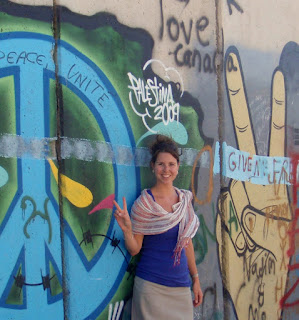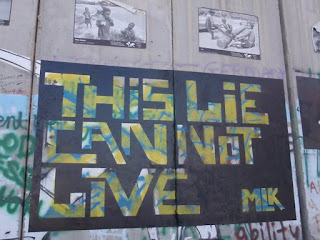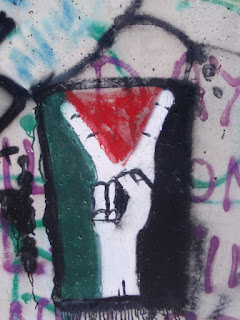 |
| Looking down on Matala beach |
As I set out on my own I was immediately drawn to the rugged south coast - as it is a bit less accessible it has less tourists and generally a more traditional feel. One of my first stops was the village of Matala. The caves of Matala were carved out of the rock thousands of years ago, but they were made famous in the 60's and 70s by the 'flower' children from around the world that came to live in this secluded ideal paradise. The area really became legendary by musicians such as Joni Mitchell, Bob Dylan and Cat Stevens that came and left their cultural imprint on the life in Matala. Now there is an interesting mix of international tourists and the 'cave-dwellers' that come from around the world to soak up/revive the way of life in the caves that are a bit more off the beaten track. It is one of those beaches in the world where you meet people that came to visit for a week and have stayed for months or even years -
 |
| The caves of Matala are carved into the soft rock like little apartments looking out over the beach with beds and separate rooms inside. | | |
|
|
 |
| A carved olive tree at Matala |
 |
| Looking down on the coast & Red Beach |
Just over the hill from Matala beach and a rugged 30 min walk away lies the more secluded Red Beach where inhibitions are left at the trail head ~ the water is more clear, the drinks a bit tastier and the true Crete south coast vibe soothes the soul.
 |
| Hand painted signs lead the way~ |
 |
| The cliffs of Red Beach |
 |
| My favorite time on the beach.... when the sun begins to set and the chairs are empty;) |
 |
| Sunset over the Libyan Sea |
I originally came to Greece to learn about the traditional herbs and natural medicines.... What I found was that a few of the Crete 'medicines' and secrets to a long and happy life are in liquid form - in no particular order they are the following: The pure spring water from the hills, the local thyme honey from the villages, the young sweet wine, the amazing olive oil and the local raki. No matter how hard you try, there is no escaping these (although the spring water is the most difficult to find). The Cretans are proud of their local products and everywhere you go the local drinks are served before you can even think about whether or not it is 5pm somewhere;)
 |
| Homemade wine and raki on tap |
In Crete, raki is not simply a drink, but rather a ritual and a part of the culture of the island. They say it is good for everything - especially while eating.... you first drink it to prepare your system for the food and then afterwards it helps in digestion (but really any excuse to drink it is used). It is always offered and people become a bit offended if you do not partake - but I have learned to drink the small shots slowly (even though it is very strong) for if you take it down like a regular shot then the next one will be served before you can say 'Opa!'.
Raki is a powerful distilled drink with an alcohol percent ranging from 35-70 (a wide range depending on who makes it!). It comes pure (the clear) or with honey (the yellow). It is produced from the residue left over from the wine press. The local raki is usually pretty cheap and consumed in large quantities as people can fill up water bottles around every corner!
YAMAS!!
(cheers)

























































